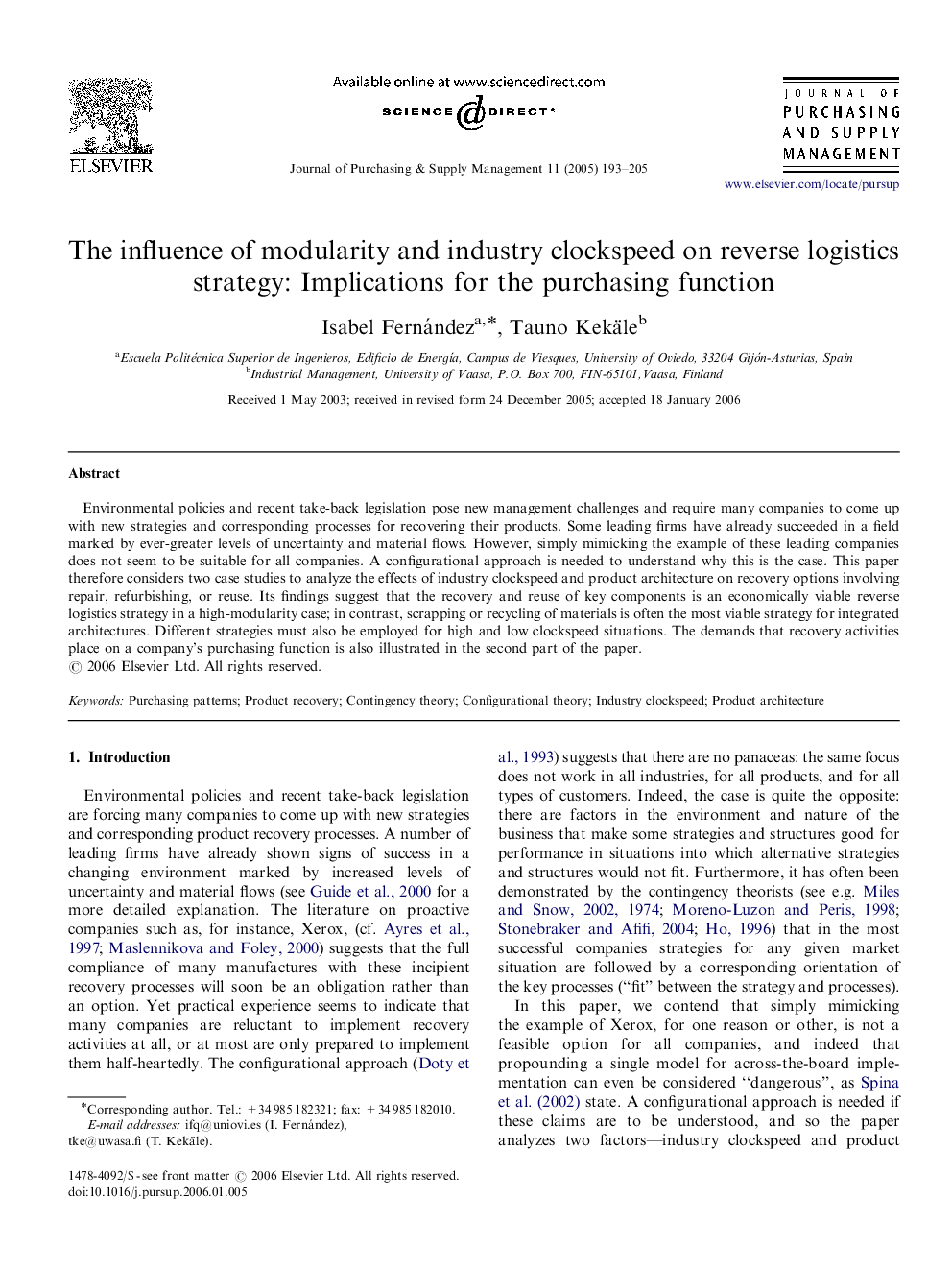| کد مقاله | کد نشریه | سال انتشار | مقاله انگلیسی | نسخه تمام متن |
|---|---|---|---|---|
| 10494349 | 940959 | 2005 | 13 صفحه PDF | دانلود رایگان |
عنوان انگلیسی مقاله ISI
The influence of modularity and industry clockspeed on reverse logistics strategy: Implications for the purchasing function
دانلود مقاله + سفارش ترجمه
دانلود مقاله ISI انگلیسی
رایگان برای ایرانیان
کلمات کلیدی
موضوعات مرتبط
علوم انسانی و اجتماعی
مدیریت، کسب و کار و حسابداری
کسب و کار و مدیریت بین المللی
پیش نمایش صفحه اول مقاله

چکیده انگلیسی
Environmental policies and recent take-back legislation pose new management challenges and require many companies to come up with new strategies and corresponding processes for recovering their products. Some leading firms have already succeeded in a field marked by ever-greater levels of uncertainty and material flows. However, simply mimicking the example of these leading companies does not seem to be suitable for all companies. A configurational approach is needed to understand why this is the case. This paper therefore considers two case studies to analyze the effects of industry clockspeed and product architecture on recovery options involving repair, refurbishing, or reuse. Its findings suggest that the recovery and reuse of key components is an economically viable reverse logistics strategy in a high-modularity case; in contrast, scrapping or recycling of materials is often the most viable strategy for integrated architectures. Different strategies must also be employed for high and low clockspeed situations. The demands that recovery activities place on a company's purchasing function is also illustrated in the second part of the paper.
ناشر
Database: Elsevier - ScienceDirect (ساینس دایرکت)
Journal: Journal of Purchasing and Supply Management - Volume 11, Issue 4, July 2005, Pages 193-205
Journal: Journal of Purchasing and Supply Management - Volume 11, Issue 4, July 2005, Pages 193-205
نویسندگان
Isabel Fernández, Tauno Kekäle,